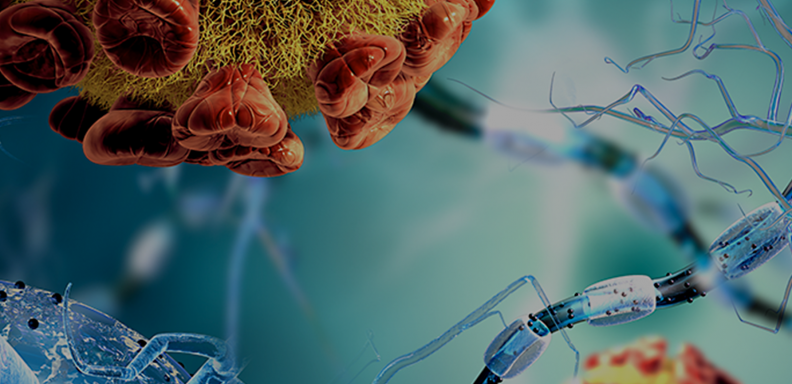For researchers who study cancer, like Yu-Ying He, understanding the disease and understanding the body is in many ways one and the same. This is because cancer hijacks our bodies’ underlying biological mechanisms for its own gain.
Of these mechanisms, He, Associate Professor of Medicine, and her lab at the University of Chicago, focus on those that maintain a healthy balance of molecules in the cell by regulating gene expression. For a long time, this type of research has focused primarily on changes that affect how our body interprets our DNA, or epigenetics. But He’s lab is also interested in a developing area of study called epitranscriptomics, which deals with changes that affect how our body interprets RNA — an intermediate step between DNA and a protein.
In an article published April 12 in Nature Communications, senior author He and her team elucidate the role of epitranscriptomics in a skin cancer that develops from exposure to low levels of arsenic, like those sometimes found in contaminated drinking water. The researchers found that RNA interactions are disrupted in skin cells exposed to low levels of arsenic, ultimately affecting the balance of proteins in cells and causing them to become cancerous. He’s findings shed light on the relationship between RNA, proteins, and cancer progression, which is rooted in one of the most fundamental tenants of biology.
The central dogma
Proteins are doers. They carry out specific tasks such as catalyzing reactions, transferring signals across tissues, assembling into higher-dimensional structures with new capabilities, and shuttling other molecular components throughout the cell. Proteins are the machines that keep our cells functioning as they should, and, since cells make up tissues, which make up organs, proteins are ultimately what keep us functioning too. On the flip side, when things go wrong on the protein level, the results can be devastating. Hallmarks of cancerous tissue cells, for example, include abnormal cell growth and cell division, which are both controlled by proteins.
If proteins fundamentally control diseases like cancer, what controls proteins? Like a machine designed for a particular task, a protein’s function is a product of its structure—what it’s made from and how those components are arranged. To build these precise mini-machines, our cells follow the instructions written in our DNA.
Each strand of a DNA molecule is made up of a unique sequence of molecular units, a section of which is used to construct an mRNA molecule (a type of RNA), and the mRNA’s sequence is then used as a template for building a specific protein. This process is so fundamental to biology that it is often referred to as its “central dogma” and summarized simply as “DNA makes RNA and RNA makes protein.”
The idea that a protein’s ultimate functionality, or lack thereof, is encoded in DNA is at the heart of the CRISPR method, for which Jennifer Doudna and Emmanuelle Charpentier won the Nobel Prize in 2020. CRISPR allows scientists to edit a person’s DNA sequence, changing the proteins that are built down the line. Instead of fixing malfunctioning proteins, CRISPR fixes the instructions used to build the proteins in the first place.
RNA modifications
As is often the case in biology, it turns out that there is more to the story. Proteins are not always entirely pre-determined by the DNA sequence. Since the mid-20th century, scientists have been discovering RNA modifications— naturally-occurring changes to RNA molecules after they have been constructed based on DNA. In the case of mRNA, these modifications, albeit rare, interject the so-called central dogma, changing RNA before it gets “translated” into proteins.
These modifications include insertion and deletion of nucleotides (molecular subunits) along the RNA chain, as well as chemical changes to existing nucleotides. The most common and well-studied mRNA modification is the latter type and is characterized by a transformation of the nucleotide adenosine to another molecule, N6-methyladenosine, or m6A, through a process called methylation. This change is made by “writer” molecules, interacted with by “readers,” and can be undone by “erasers” or demethylases.
Scientists first discovered the existence of RNA demethylases in 2011, with the identification of the fat mass obesity-associated protein (FTO). They now know that erasers like FTO work alongside writers and readers to maintain a normal, healthy amount of m6A modification. In fact, one of the hallmarks of many types of cancers is abnormal quantities of writers, readers, and erasers of certain RNA modifications. In leukemia, glioblastoma, and cervical carcinoma, for example, FTO is over-expressed, meaning there is more of it than in healthy cells, and this abundance of FTO can cause cancer cells to be resistant to chemotherapy and proliferate more aggressively.
With these discoveries comes the possibility for new treatments. Already, scientists and clinicians have found that inhibiting FTO can suppress tumor growth. Moreover, focusing on RNA over DNA has its benefits—DNA is forever, so to speak, while treatments affecting RNA could be better localized and short-lived. This is because the body routinely gets rid of ineffective RNA, clearing any mistakes brought on by RNA editing.
Arsenic-induced FTO over-expression
In their recent study, He and her team found that low levels of arsenic induced tumor formation and abnormally high levels of FTO in keratinocytes (the main type of epidermal skin cell). By deleting FTO, the researchers were able to inhibit this tumor proliferation. To do this, though, they had to figure out exactly why FTO levels were so high and how they were related to tumor formation.
The answer was that arsenic was impairing the specific kind of autophagy—a cellular mechanism of removing unwanted molecules—that eliminates FTO. In other words, low levels of arsenic made it hard for the cell to get rid of FTO, leading to more of it. Furthermore, more FTO led to lower concentrations of another molecule, NEDD4L, which inhibits tumor growth.
Although their research focused on arsenic exposure in skin cells, the team’s discoveries about the fundamental mechanisms underlying cancer development in this case are likely to be relevant for other epithelial tissue cancers, which make up about 90% of all cancer cases, including skin, liver, and the most common type of ovarian cancer. Moreover, this research furthers our rapidly-growing understanding of RNA modification, which could lead to safer gene editing methods for a broad range of diseases.



